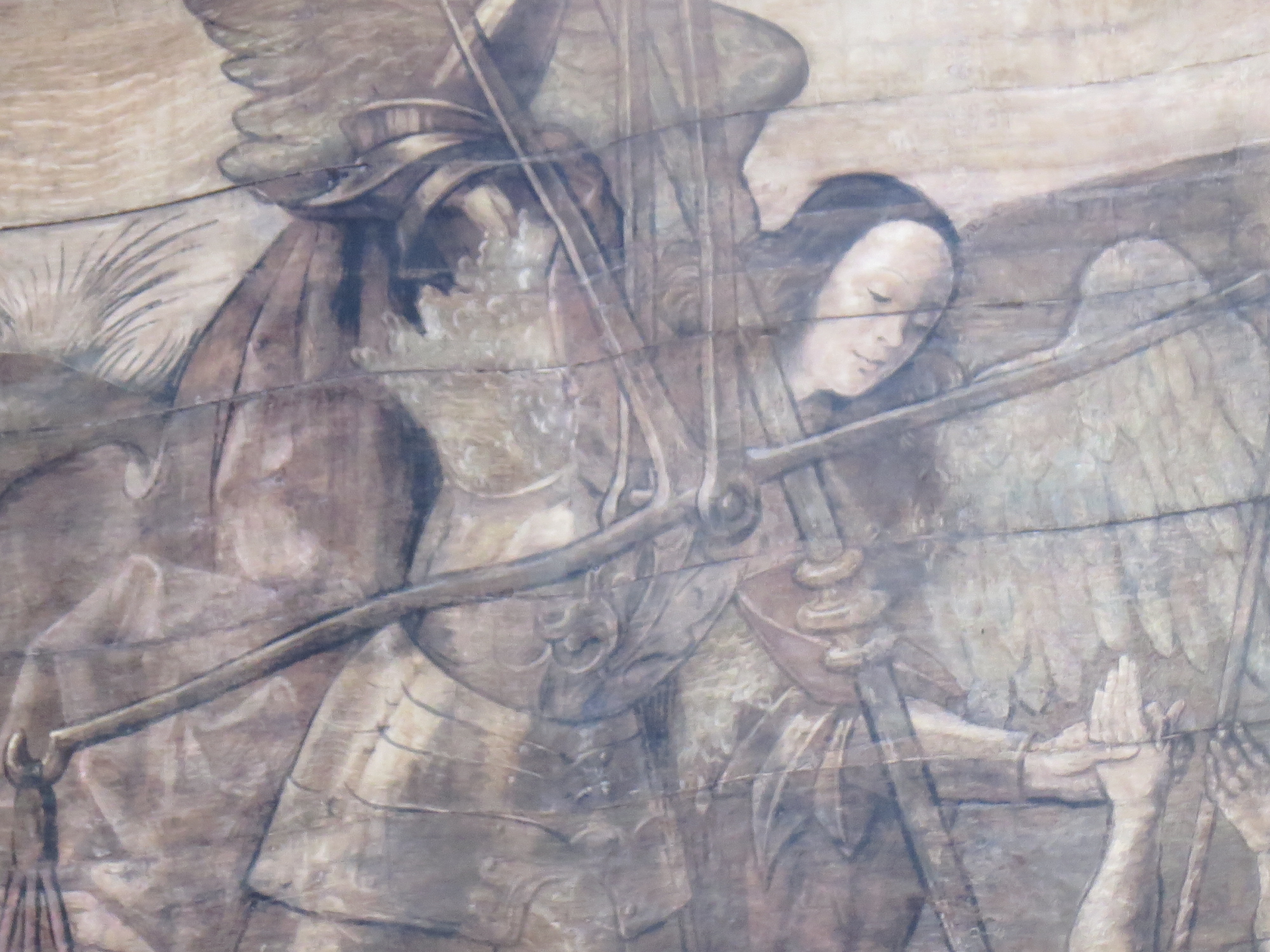Actually it’s what I say. Every morning I say this when some fresh news pops up on my screen that confirms the sorry state of our public realm. I either say or think these words, un-specifically directed at the source of the bad news, my computer, or the world in general if I have a particularly bad morning.

Funny thing is, of course, that I believe neither in heaven nor in hell, as is Jewish custom and, in my view, required of me as a scientist. It was all the more interesting to come across a podcast that discusses a book about the origins of the concept. Hell and Damnation: A Sinner’s Guide to Eternal Torment by Marq de Villiers promises to be a fun and educational romp, should these kind of things interest you.

Here are some of the bits that I remember being discussed:
- The majority of people in the US (60% and up) believe in hell, while not quite that many (40% or so) believe in heaven. Huh? In Canada that ratio is apparently reversed. Riddle me that….. Then again, many smart people did buy into the concept, across all of history, with Galileo, for example, trying to calculate the exact depth of hell under the surface of the earth…..
- Almost all religions in the world (Judaism being a noted exception) have a construct of hell (some up to 44.ooo of them, one specific one for every imaginable infraction. I am hard pressed to come up with even 100 infractions. But then again, I’ve always been a good girl. Well, let’s not go into that. There is a hell for lying, I am certain.)



- There is an incredibly interesting historic evolution of the notion of external punishment:
- Even in the early days of mankind, when animistic notions prevailed, people needed to satisfy their hunger for causal models. Why did something go wrong that shouldn’t have? Why, some demon must have interfered! We see the first externalization onto some invisible beings.
- With later increasing urbanization, people were better able to witness all the malevolence around them, murder, adultery, greed and embezzlement. Bad people seemed to prosper, which undermined another psychological need of all of us: the assumption that the world is just. Ok, so we just add on a next chapter, the afterlife, and that’s when things will get put right. And it will be judged by some invisible entity who can decide what fate awaits you, having clairvoyance as to what has been going on in your soul. Note that the very early cultures with this concept did not necessarily imply you would be punished – you just would not be ferried across a bridge, or down a river, or into a hole to enter the afterlife. For many African cultures it meant you would either be revered as an ancestor (good) or simply forgotten (bad=extinguished.)


- It was the ancient Greeks who developed the notion of potential torture in that afterlife. Civilized as they were, however, punishment did not last for all eternity – you got your stretch and then were released on parole, so to speak.
- Monotheism changed all that. You were going to fry. Undergo unimaginable pain. Forever and a day or two. The notion of hell became an instrument of control, with threatened consequences of a hellish sort shaping you into obedient subjects. The more the traditional religions (Christianity and to some extent Islam) saw themselves challenged by free thinkers or other sectarian branches, the more intense the visions of hell and damnation became. The stories fed on each other, becoming more lurid by the century, culminating in aggressive control attempts like the witch trials. Christianity in particular, was unable to solve an inherent contradiction: Here is the devil, a fallen angel, banished from heaven, the incarnation of evil and yet his function or role is that of God’s agent of cosmic justice. In other words, doing good….
- Of interest is also that there were always sly escape routes – if you had power or money, that is. For the Egyptians, priest and kings were exempt from being judged if they were deserving of the afterlife – they got in automatically. In medieval Europe, you could buy yourself out of a pickle by donating to the collections of the Catholic church.

- There have been multiple reports of people making it to hell and back, reporting similar stories of fire, pits, crows hacking entrails and so on. Also cross-culturally, people insist that hell is underground and different countries do pinpoint exact locations where hell can be entered through this or that cave. Some require passwords, almost all are gated. Some, like Fengdu in China, work even on the top of a mountain (the original city was destroyed when they built the dam which flooded that particular entrance to the next life….)
It all would be funny, if it weren’t so dire in its applications. When a construct of assumed external causality and balance between the now and later shifts into a systematic tool of oppression we have a hellish problem, as much of our history shows. And it is, of course, not over. Which gives me occasion to mumble, once again, oh, go to hell!

Photographs intent to show a stylish ascent/descent, should it become necessary.
Music is Danse Macabre by Saint-Saëns; the top string, E, is tuned down a semitone, a technique called scordatura, to allow the violinist to perform the tritone chord associated with the devil.
And here is another waltz with the devil:

















































































